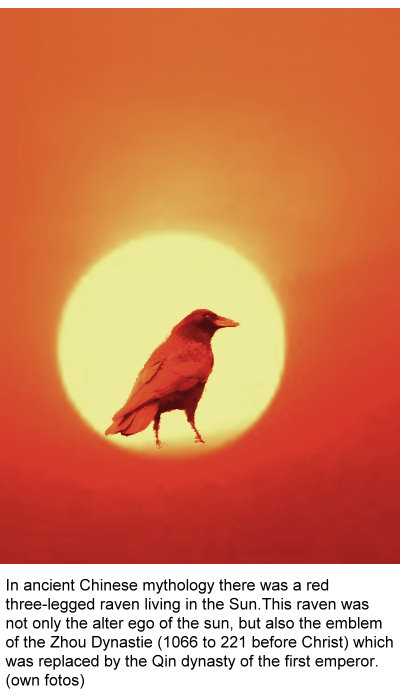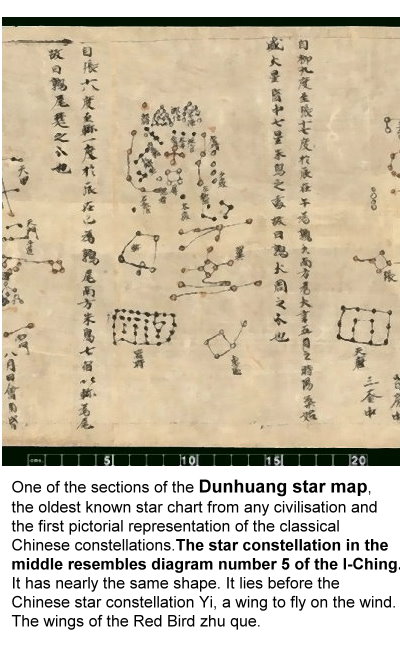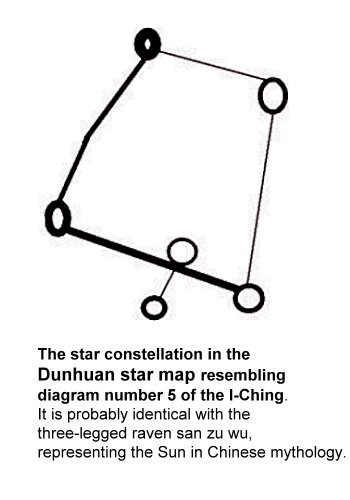
Which secret lies behind diagram number 5 of the I-Ching – is it perhaps the alter ego of the sun?

(Diagram number 5 is the frequency distribution of the trigrams of the hexagrams 9, 10, 33, 34, 57 and 58 of the I Ching)
In the 1900s The Chinese Taoist Wang Yuan-lu discovered in the Dunhuang Mogao Caves at the Chinese Silk road thousands of old manuscripts. He was selling them piece by piece to support himself and the monastery. In 1907, Aurel Stein and Paul Pelliot bought over 9000 objects and manuscripts from him and sent them to the British Museum in London. Most of the Dunhuang documents are religious texts on Buddhism. But among these manuscripts also was the first known graphical representation of stars from ancient Chinese astronomy, dated back to the years +(649-684) of the early Tang Dynasty. The map contains over 1,300 stars in thirteen sections. The first detailed scientific analysis of the star chart performed in 2010 reveals that it has a accuracy of 1.5 to 4° for the brightest stars. This accuracy is remarkable. It is the oldest known star chart from any civilisation and the first pictorial representation of the classical Chinese constellations.



A section of the Dunhuang star map shows a star constellation that resembles strongly diagram number 5 of the I-Ching. It lies before the Chinese star constellation Yi, the wings of the Red Bird zhu que. At this position on the Sumerian sky is a Crow named UGA. This crow is after Sun Xiaochun and Jacob Kistemaker probably identical with the three-legged raven san zu wu, representing the Sun in Chinese mythology. Therefore I think diagram number 5 is the three-legged raven san zu wu, representing the sun. If diagram 5 represents the sun, then its properties must have something to do with the sun. Properties of the diagram are especially its trigrams and the time of appearing. In fact, both of them have much to do with the sun:Figure 5 shows the trigram distribution of the two solar cycles from 06/06 to 07/06. In these two solar cycles is the summer solstice. The sun is then at the height of its power. The vegetation explodes. The Yang force reaches its maximum of 26 lines. Yin is represented with only ten lines. The trigram heaven increases with the number four for the second time of the year in its maximum value. The first falls on the beginning of spring. Also reach the trigram wind and the trigram lake their maximum values. The wind trigram symbolizes not only the wind, but also the growth of plants and the trigram lake not only a swamp, but also joy and happiness. The star constellation of the three-legged raven san zu wu could in the city of Xian in the territory of the Wei River, 200 BC. be observed at the summer solstice for several hours in the evening sky. It had passed its climax and was in the south-westerly direction in the descent.